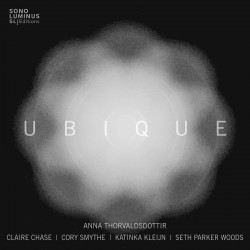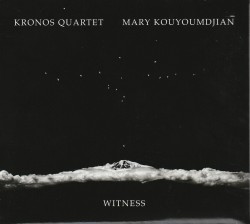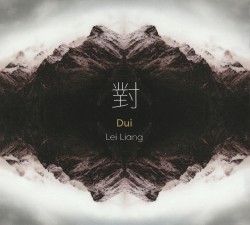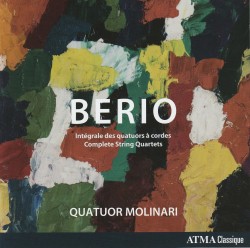Anna Thorvaldsdottir: Ubique - Claire Chase; Cory Smythe; Katinka Kleijn; Seth Parker Woods
 Anna Thorvaldsdottir - Ubique
Anna Thorvaldsdottir - Ubique
Claire Chase; Cory Smythe; Katinka Kleijn; Seth Parker Woods
Sono Luminus SL | Editions DSL-92280 (sonoluminus.com/sonoluminus/ubique)
“Ubique" is a Latin word meaning "everywhere" (and even at every time too). But Ubique is also recording of works by the brilliant Icelandic composer Anna S. Þorvaldsdóttir (or Anna Thorvaldsdottir to the English-speaking world), which has added layers of meaning because of its all-star cast: a stellar quartet led by the generational wundkerkind and Princess Royal of the flute family: Claire Chase.
Chase has done, for the flutes, what Steve Lacy did for Sidney Bechet’s beloved soprano saxophone; what Jimi Hendrix did for the guitar and Dame Evelyn Glennie has done for orchestral percussion. Like them Chase has revolutionised the flute family, changing the range and scope of each variant, vocalising the instrument by projecting throat and chest voices through the flute, employing pizzicato and percussive multiphonics. In short Chase can sound like a whole wind section.
The 45-minute Ubique was commissioned for the tenth cycle of Chase’s Density 2036 project, a 24-year initiative to create new repertory for the flute, to commemorate the centennial of Edgard Varèse’s seminal 1936 flute solo Density 21.5. On this iteration Chase is in vaunted company with the extraordinary pianist Cory Smythe, and prodigious cellists Katinka Kleijn and Seth Parker Woods.
Added to that is the expressive lyricism, spectral mystique, and richly refined humanity of Thorvaldsdottir’s ingenious work, and here’s an album that’s nothing short of miraculous.







